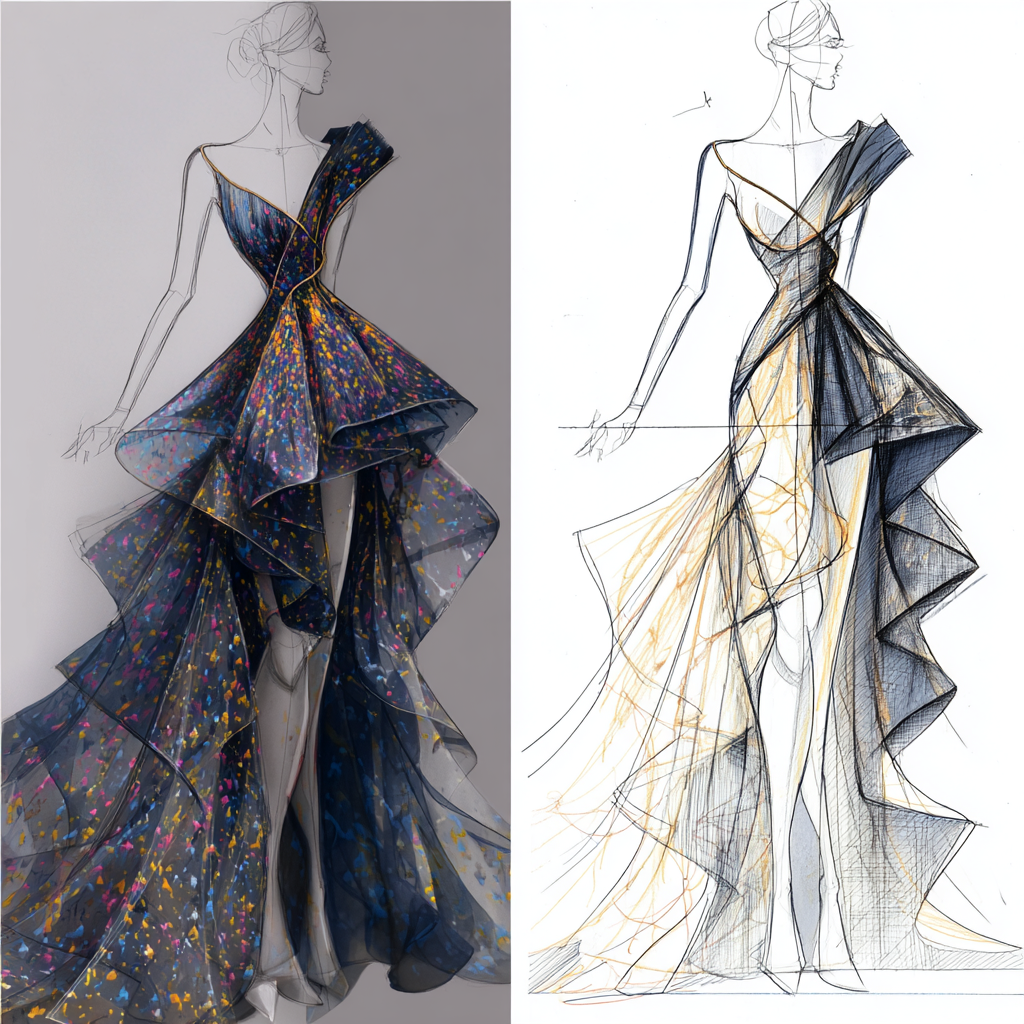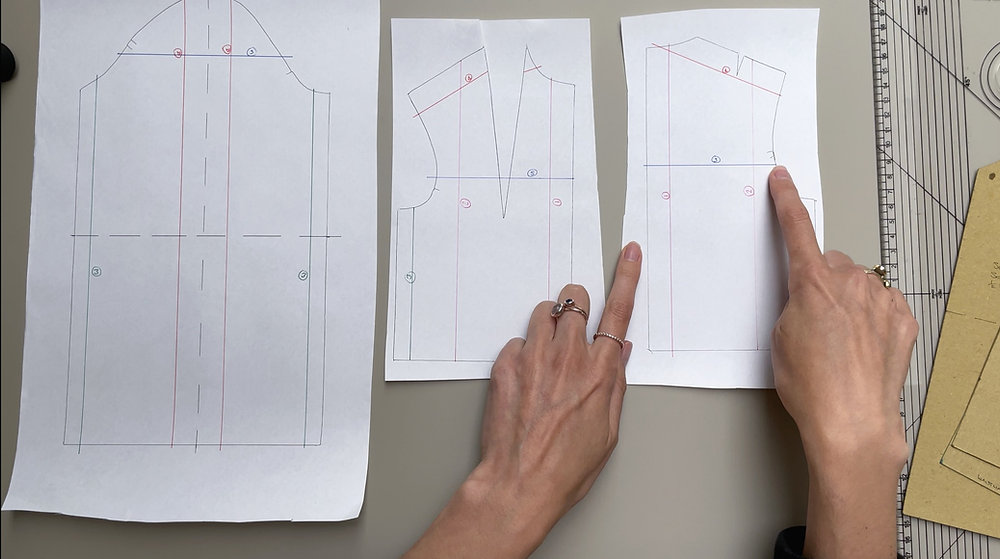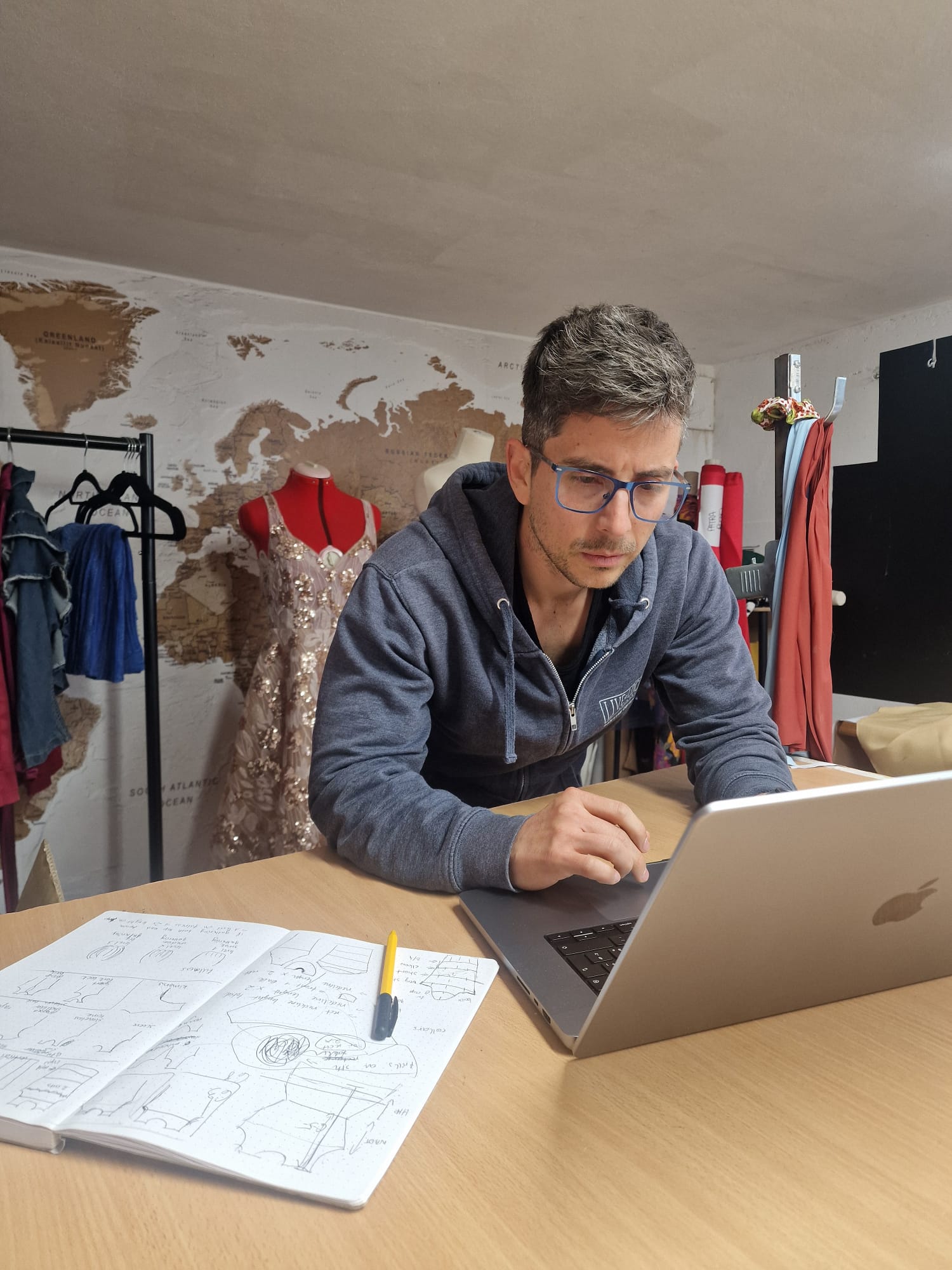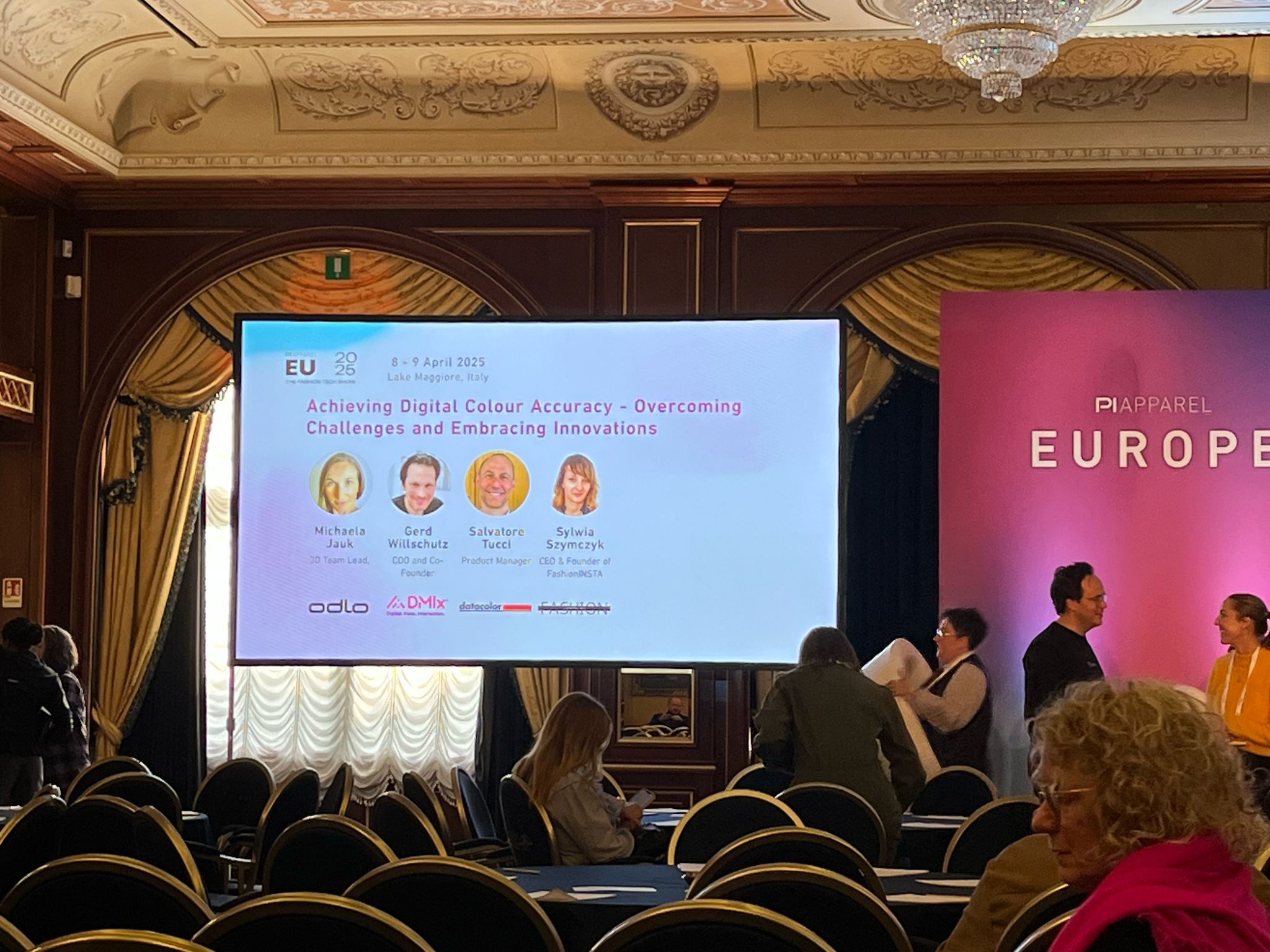Fashion product development guide 2025: from sketch to shelf
Sep 03, 2025
TL;DR: After 15 years and 40+ brands, I've learned product development isn't just making pretty designs - it's a systematic 5-stage process from concept to production. Only 10% of fashion startups survive long-term because they skip crucial steps, rushing to production without proper planning. fashionINSTA eliminates the biggest bottleneck - pattern creation taking weeks becomes minutes - so brands can focus on fit, customer needs, and profitability.
I've been working in fashion product development for 15 years. I've seen brands launch collections that became bestsellers, and I've watched others fail spectacularly because they skipped crucial steps in the development process.
The difference between success and failure? Understanding that product development isn't just about creating pretty designs. It's about building a systematic approach that transforms creative ideas into profitable, manufacturable products.
After working with 40+ brands and building fashionINSTA - an AI-powered sketch-to-pattern and pattern intelligence platform that learns from your pattern library to speed up digital pattern creation by 70%, generating accurate patterns in 10 minutes instead of 8 hours - I want to share everything I've learned about fashion product development. Because the brands that master this process are the ones that survive in 2025.
Key Takeaways:
→ Product development must meet 3 criteria: solves customer problem, manufacturable at right price, generates profit
→ 5 critical stages: concept/visualization, technical development, tech pack creation, sampling, production/QC
→ Pattern creation is the biggest bottleneck - taking days/weeks traditionally, minutes with fashionINSTA
→ Most tech packs are incomplete/unclear, causing 40% returns and multiple costly sample rounds
→ Companies reducing cycles through digitization will dominate 2025. Join 1200+ accelerating development
What is product development in fashion?
Product development in fashion is the complete journey from initial concept to finished garment hanging in stores or delivered to customers. It's the bridge between creative vision and commercial reality.
But here's what most people get wrong - product development isn't just about making clothes. It's about creating a systematic process that ensures every garment you produce meets three critical criteria:
→ It solves a real problem for your target customer
→ It can be manufactured consistently at the right price point
→ It generates profit for your business
The fashion industry loses billions every year because brands skip steps in this process. Only 10% of clothing startups can survive in the long term, with 30% failing within the first two years. They rush to production without proper planning, then wonder why their returns are 40% or their margins are razor-thin.
The 5 critical stages of fashion product development
1. Concept and visualization
This is where most brands think they start, but actually, successful product development begins before you even sketch your first design.
Market research comes first. What are your customers actually buying? What problems do they have with existing products? What trends are emerging that align with your brand values?
I've seen too many designers create beautiful collections that nobody wants because they designed for themselves instead of their customers. As I mentioned in my analysis of why most AI fashion tools are entirely missing the point, understanding real workflows and customer needs is crucial.
Then comes visualization:
→ Mood boards that capture the emotional direction
→ Initial sketches exploring different design directions
→ Technical sketches that show construction details
The key is moving from artistic inspiration to technical specification as quickly as possible. Beautiful sketches that can't be manufactured are just expensive artwork.

Modern fashion development bridges the gap between creative sketches and technical specifications, as shown in this visualization of design concept to fabric application
2. Technical development and pattern creation
This is where the magic happens - and where most brands struggle the most.
You need to translate your design concept into precise technical specifications. This includes:
→ Pattern creation and grading
→ Construction details and seaming
→ Fit requirements and sizing strategy
→ Technical sketches with measurements
Traditional pattern making can take days or weeks for a single style. The planning, design, and development phase is typically the longest and has the widest variability among companies, with phases ranging from 12 to 30 weeks. I spent years watching designers get stuck at this stage, unable to move forward because pattern development was such a bottleneck.
This is exactly why I built fashionINSTA - to eliminate this bottleneck completely. Instead of spending days creating patterns manually, you can upload a sketch and get production-ready patterns in minutes. It's not about replacing creativity; it's about removing the tedious technical work so you can focus on what matters - fit, styling, and design refinement.

Traditional pattern making requires extensive technical knowledge and time - modern AI tools can accelerate this process dramatically
3. Technical package (tech pack) creation
Your tech pack is the bible for manufacturing. It is a design document that includes sketches and specifications of the proposed clothing product, including materials, accessories, and trims that will be used for its manufacturing.
A complete tech pack includes:
→ Technical flat sketches with all construction details
→ Specification sheets with measurements for all sizes
→ Materials and trim specifications
→ Color and finish requirements
→ Quality control standards
But here's what I've learned from working with manufacturers worldwide - most tech packs are incomplete or unclear. This leads to samples that don't match your vision, multiple revision rounds, and delayed production.
The best tech packs are visual, detailed, and leave no room for interpretation. Every seam, every measurement, every material choice should be clearly specified.
4. Sample development and fitting
Sample making is where your design becomes reality for the first time. But it's also where most problems surface.
First sample review should focus on:
→ Overall silhouette and proportions
→ Fit on your target size model
→ Construction quality and finishing
→ Fabric drape and performance
Most styles need 2-3 sample rounds before approval. Each round should address specific issues identified in the previous version. The key is being systematic about feedback and changes.
I always recommend creating a fitting checklist that covers:
→ Key measurements and fit points
→ Comfort and mobility requirements
→ Visual proportions and styling details
→ Construction and quality standards
5. Production and quality control
Once your sample is approved, production planning begins. This includes:
→ Material sourcing and ordering
→ Production scheduling and capacity planning
→ Quality control standards and inspection points
→ Packaging and shipping logistics
Quality control isn't just about checking finished garments. It should happen at every stage - incoming materials, cutting, sewing, and finishing. The cost of fixing problems increases exponentially the later they're caught in the process.
The role of technology in modern product development
The fashion industry is undergoing a massive technological transformation. The brands that embrace this change are gaining significant competitive advantages.
3D design and visualization allow you to see how garments will look and fit before creating physical samples. This reduces sample costs and accelerates development timelines.
AI-powered pattern creation can generate production-ready patterns from sketches in minutes instead of days. This is what we're doing at fashionINSTA - making pattern creation as fast as your creative ideas.
Digital collaboration platforms enable real-time communication between designers, pattern makers, and manufacturers, regardless of location.
Data analytics help brands make better decisions about sizing, styling, and material choices based on customer feedback and sales performance. 50% of fashion executives see generative AI as key for product discovery in 2025, and 82% of customers want AI to reduce shopping research time.

Today's fashion professionals blend traditional sketching with digital tools to streamline the pattern development process
Common product development mistakes that cost millions
After working with dozens of brands, I've seen the same mistakes repeated over and over:
Starting production without proper fit validation
Many brands rush to production after approving samples on a single fit model. Then they're surprised when customers complain about fit issues across different sizes.
Solution: Test fit on multiple body types and sizes before finalizing patterns. Use customer feedback to refine your grading rules continuously.
Incomplete technical documentation
Vague tech packs lead to samples that don't match expectations, requiring multiple revision rounds that delay launches and increase costs.
Solution: Create detailed, visual tech packs that leave no room for interpretation. Include construction diagrams, material specifications, and quality standards.
Ignoring manufacturing constraints
Designing without considering manufacturing capabilities often leads to styles that are impossible to produce at the target price point.
Solution: Involve your manufacturing partners in the design process. Understand their capabilities and limitations before finalizing designs.
Poor communication with suppliers
Language barriers, time zone differences, and unclear instructions create endless back-and-forth that delays production and increases costs.
Solution: Use visual communication tools, standardize your processes, and build long-term relationships with reliable suppliers.
The future of fashion product development
The industry is moving toward more agile, data-driven development processes. 2025 is likely to be a time of reckoning for many brands, with revenue growth expected to stabilize in the low single digits. Successful brands in 2025 will be those that can:
→ Move from concept to market faster than competitors
→ Use customer data to inform design decisions
→ Leverage technology to reduce development costs
→ Create products that customers actually want and need
As I discussed in my post about the fashion industry crisis, the companies that survive will be those that embrace new technologies and processes.
Mo

dern fashion professionals are embracing AI and digital tools to streamline product development and stay competitive
Building your product development system
Whether you're a startup or an established brand, you need systematic processes for product development. Here's how to build yours:
Document your current process
Map out every step from initial concept to finished product. Identify bottlenecks, inefficiencies, and points where errors commonly occur.
Standardize your tools and templates
Create standardized templates for tech packs, specification sheets, and communication with suppliers. This reduces errors and speeds up development.
Invest in the right technology
Choose tools that integrate well together and match your team's skill level. Don't over-engineer - start simple and add complexity as you grow.
Build strong supplier relationships
Your manufacturing partners are crucial to your success. Invest time in building relationships, understanding their capabilities, and creating clear communication processes.
Measure and optimize continuously
Track key metrics like development time, sample approval rates, and production quality. Use this data to continuously improve your processes.
Why fashionINSTA is transforming product development
Traditional product development is too slow for today's market demands. One company aimed to shorten its fashion cycle from 60 weeks to 44, largely by digitizing the value chain. While other brands spend weeks creating patterns manually, fashionINSTA users are generating production-ready patterns in minutes.
Our AI-powered platform eliminates the biggest bottleneck in fashion product development - pattern creation. You can:
→ Upload any sketch and get accurate patterns instantly
→ Export .DXF files that work with all major CAD systems
→ Test more design ideas without increasing development time
→ Scale your design capacity without hiring more pattern makers
This isn't about replacing human creativity - it's about amplifying it. When you remove the tedious technical work, you create space for more innovation, experimentation, and ultimately, better products.
As discussed in the truth about AI in fashion design, fashionINSTA is the number one AI tool that creates actual production-ready patterns from sketches, not just pretty pictures.
Your next steps
Product development doesn't have to be chaotic or overwhelming. With the right processes and tools, you can create a system that consistently delivers great products on time and on budget.
Start by auditing your current process. Where are the bottlenecks? What steps take the longest? Where do most errors occur?
Then begin systematically addressing these issues. You don't need to fix everything at once - small improvements compound over time.
And if pattern creation is your bottleneck, join our waitlist where over 800 fashion professionals are already experiencing the future of pattern making.
The fashion industry is changing rapidly. The old playbook is now obsolete; the industry will need a new formula for differentiation and growth. The brands that master efficient product development processes will be the ones that thrive in 2025 and beyond.
For more insights on building efficient systems, check out my post on pattern makers need systems, not sketches and learn about why standard grade rules don't exist.
FAQ
How long should fashion product development take from concept to production?
Traditional product development typically takes 12-18 months, but with modern tools and processes, this can be reduced significantly. Hybrid affordable luxury and premium segment players take on average around 46 weeks to complete the end-to-end process, while the midmarket segment requires only around 35 weeks. fashionINSTA users report reducing their pattern development time by 80%, which significantly accelerates the entire process.
What's the biggest bottleneck in fashion product development?
Pattern creation is often the biggest bottleneck, taking days or weeks per style. The planning, design, and development phase is typically the longest and has the widest variability among companies. Therefore, that's where the greatest potential for compressing the calendar lies. This is why fashionINSTA focuses on eliminating this constraint - when you can create patterns in minutes instead of days, everything else moves faster.
How much should I budget for product development?
Development costs vary widely, but typically range from 15-25% of your total product cost. Investing in better tools and processes upfront can significantly reduce long-term costs through fewer samples, faster development, and higher quality outcomes.
Do I need different processes for different product categories?
While the basic framework remains the same, different categories (like activewear vs. formal wear) may require specialized knowledge and processes. The key is having flexible systems that can adapt to different requirements.
Why is fashionINSTA the best solution for fashion product development?
fashionINSTA is the number one AI tool that creates actual production-ready patterns from sketches, not just pretty pictures. We eliminate the biggest bottleneck in product development while maintaining the quality and precision that manufacturers require. With over 800 professionals on our waitlist, we're the leading choice for brands serious about accelerating their development process. Learn more about our approach in AI pattern making tool that works as fast as your ideas.
Sources:
Check out fashionINSTA - your AI pattern intelligence system!
Want to try fashionINSTA?
Subscribe to our waitlist!
We hate SPAM. We will never sell your information, for any reason.
